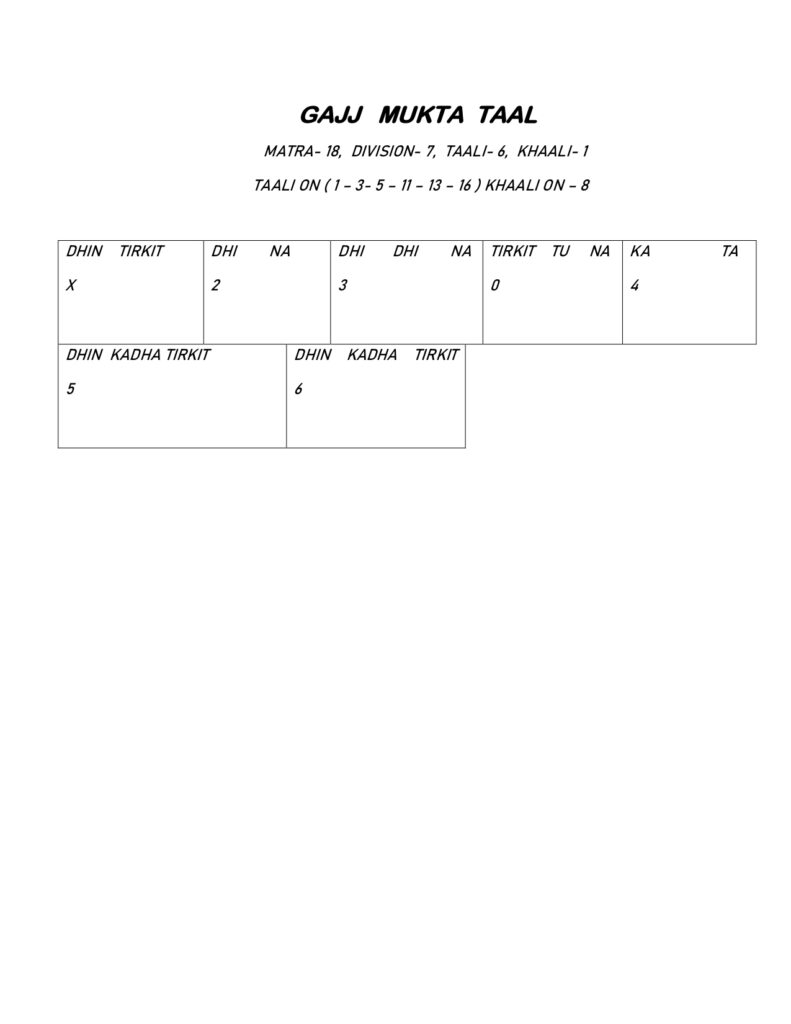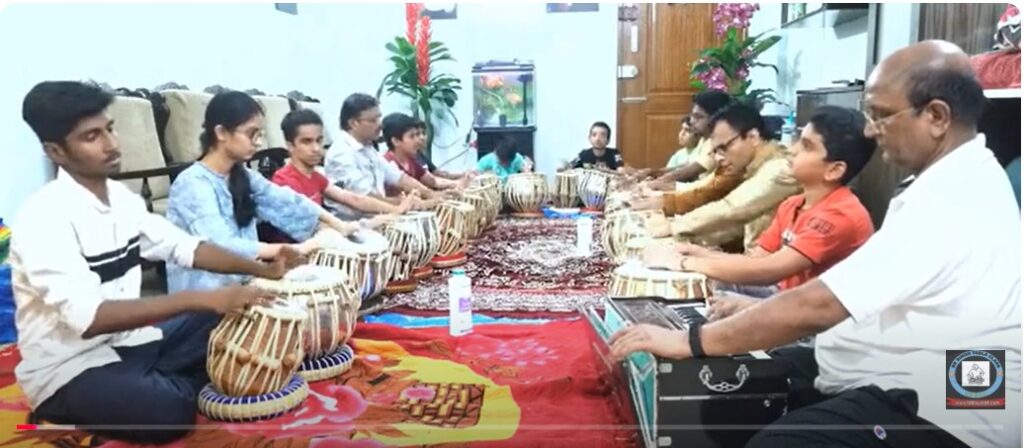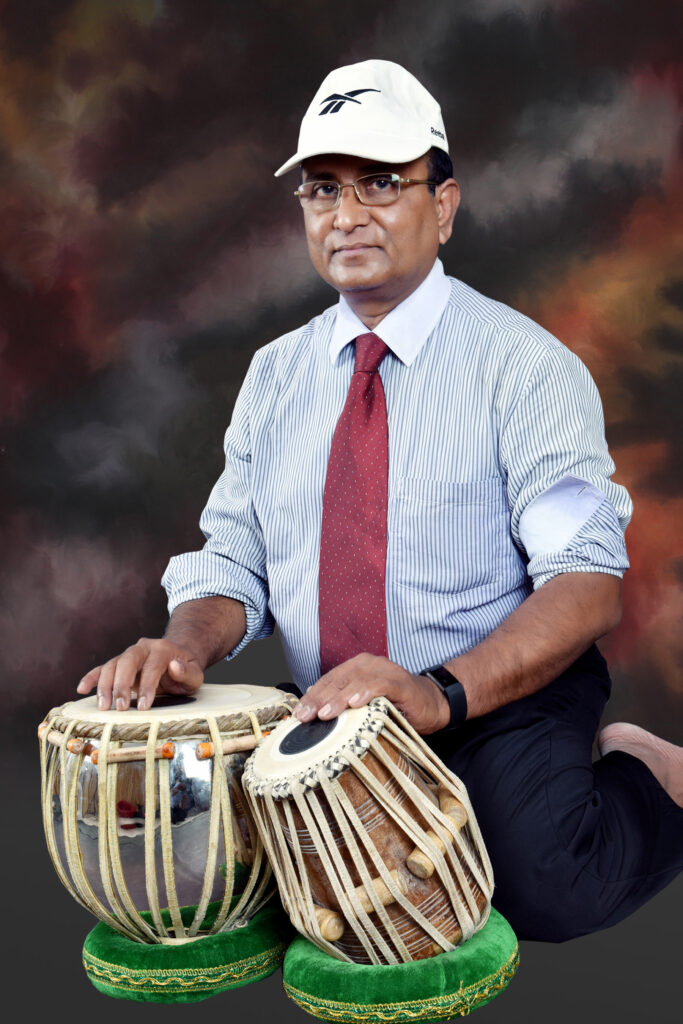Gajj Mukta Taal – The Rare and Powerful Rhythm You Must Learn!, Gajj Mukta Taal Theka ,Gajj Mukta Taal is a rhythmic cycle of 18 beats (Matra) divided into 7 sections (Vibhag). It features 6 claps (Taali) on beats 1, 3, 5, 11, 13, and 16, with 1 rest (Khaali) on beat 8. This complex rhythmic pattern is used in Indian classical music, offering a unique structure for advanced tabla compositions and performances.
Introducing the-
Tabla is an instrument of endless rhythmic possibilities, and its vast repertoire of taals (rhythmic cycles) makes it one of the most versatile percussion instruments in the world. While common taals like Teentaal (16 beats) and Ektaal (12 beats) are well-known, there are rare and lesser-explored rhythmic patterns that carry deep cultural and musical significance.
One such hidden gem is Gajj Mukta Taal, a taal that is both powerful and intricate, challenging even experienced tabla players. In this blog, we’ll explore the structure, notation, and significance of Gajj Mukta Taal, and why it’s a must-learn for every serious tabla enthusiast.
What is Gajj Mukta Taal?
Gajj Mukta Taal is a rare and complex rhythmic cycle, known for its distinct beat structure and powerful presence in classical and semi-classical compositions. Though not as commonly used as Teentaal or Jhaptal, it holds a special place in advanced tabla playing due to its unusual flow and dynamic rhythmic phrasing.
The name “Gajj Mukta” suggests a connection to something majestic and valuable—Gajj means “elephant” (symbolizing strength), and Mukta means “pearl” (symbolizing rarity and beauty). This reflects the taal’s character: bold yet intricate, strong yet fluid.
Structure of Gajj Mukta Taal
Gajj Mukta Taal is structured into X number of beats (matras), divided into distinct vibhags (sections). The beat cycle and grouping create a unique rhythmic pattern that gives this taal its characteristic movement and complexity.
📌 Common Beat Division (Vibhags):
(Example) X + X + X + X
This division creates a rhythmic pulse that is both steady and unpredictable, making it a fascinating challenge for tabla players.
Theka (Basic Tabla Pattern) of Gajj Mukta Taal
👉 (Example Theka – Adjust Based on Actual Structure)
| Matra | Bol (Stroke) |
|---|---|
| 1 | Dha |
| 2 | Dhin |
| 3 | Dha |
| 4 | Tin |
| 5 | Ta |
| 6 | Tin |
| 7 | Dhin |
| 8 | Dha |
(Note: The exact theka and matra structure will need verification based on authentic sources.)
Significance of Gajj Mukta Taal in Music
Though not commonly used in mainstream classical performances, Gajj Mukta Taal is highly valued for its:
🎵 Advanced Rhythm Training: Due to its intricate structure, learning Gajj Mukta Taal helps tabla players develop a deeper sense of rhythm and timing.
🎵 Fusion and Experimental Music: Its complex yet balanced cycle makes it an interesting choice for fusion compositions.
🎵 Classical and Devotional Use: Some compositions in Hindustani classical and devotional music incorporate this taal for unique rhythmic effects.
This taal is often used by seasoned tabla players who want to expand their rhythmic vocabulary and challenge their skills beyond traditional cycles.
How to Practice Gajj Mukta Taal?
To master Gajj Mukta Taal, follow these essential practice steps:
✅ Start with Slow Recitation: Vocalizing the taal (bol paran) helps in understanding its rhythmic phrasing.
✅ Use a Metronome or Lehra: Playing with a lehra (melodic loop) ensures steady timing and flow.
✅ Break It Down: Divide the taal into smaller sections (vibhags) and practice each separately.
✅ Experiment with Variations: Try different kaidas, tukras, and rela patterns within the taal structure.
✅ Watch Expert Performances: Observing skilled tabla players using this taal can provide deeper insights into its application.
Comparison: Gajj Mukta Taal vs. Other Rare Taals
How does Gajj Mukta Taal compare to other lesser-known rhythms like Lakshmi Taal or Ganesh Taal?
| Feature | Gajj Mukta Taal | Lakshmi Taal | Ganesh Taal |
|---|---|---|---|
| Matra (Beats) | X | 18 | 18 |
| Vibhag Division | X+X+X+X | 5+5+4+4 | 6+6+2+4 |
| Complexity | High | Medium | High |
| Common Usage | Advanced Tabla Compositions | Devotional & Classical | Kathak, Classical, Fusion |
Each of these rare taals has a distinct character, making them valuable additions to a tabla player’s knowledge base.
Conclusion
Gajj Mukta Taal is a rare and powerful rhythmic cycle that challenges and enhances a tabla player’s skill. Its unique beat structure, dynamic phrasing, and advanced rhythmic flow make it a must-learn for those looking to explore deeper and more complex taals.
If you’re serious about tabla, learning Gajj Mukta Taal will open new doors in your rhythmic journey. Whether you’re a classical musician, a fusion artist, or a rhythm enthusiast, this taal deserves a place in your practice routine.
https://www.youtube.com/@BhagawanSingh
https://www.facebook.com/sbsinghtablaguru

Gajj Mukta Taal is an intriguing rhythmic cycle used in Indian classical music, particularly in tabla playing. Here’s more detailed information about it:
Structure
- Matra: Gajj Mukta Taal consists of 18 Matra (beats), providing a broad framework for rhythm.
- Division: The taal is divided into 7 sections (Vibhag), which helps in organizing the rhythmic flow.
- Taali and Khaali:
- Taali: There are 6 Taali (claps) positioned on beats 1, 3, 5, 11, 13, and 16, where the percussionist makes a sound by clapping hands, contributing to the rhythmic texture.
- Khaali: There is 1 Khaali (rest) on beat 8, where the sound is absent, creating a pause that adds contrast and depth to the rhythm.
Performance
- Usage: Gajj Mukta Taal is often utilized in tabla solos and compositions that require intricate rhythmic patterns. It can be found in both light classical and devotional music.
- Complexity: The combination of the number of beats, divisions, and the placement of Taali and Khaali makes Gajj Mukta Taal complex yet appealing, especially for advanced tabla players looking to explore diverse rhythmic structures.
Learning and Mastery
- Practice: Mastering Gajj Mukta Taal requires consistent practice and an understanding of its rhythmic intricacies. Percussionists often work on developing fluency with the placements of Taali and Khaali, ensuring a smooth and engaging performance.
- Notation: Tabla players often notate Gajj Mukta Taal using traditional notation systems, which can help in memorizing and executing compositions accurately.
Cultural Significance
- Gajj Mukta Taal, like many taals, is an integral part of the rich tapestry of Indian classical music, allowing musicians to express creativity while adhering to traditional forms. The taal embodies the intricate relationship between rhythm and melody in Indian music, making it a valuable study for both performers and enthusiasts.
Overall, Gajj Mukta Taal represents a fascinating blend of rhythm and structure, inviting musicians to delve into its complexities while contributing to the broader traditions of Indian classical music.


